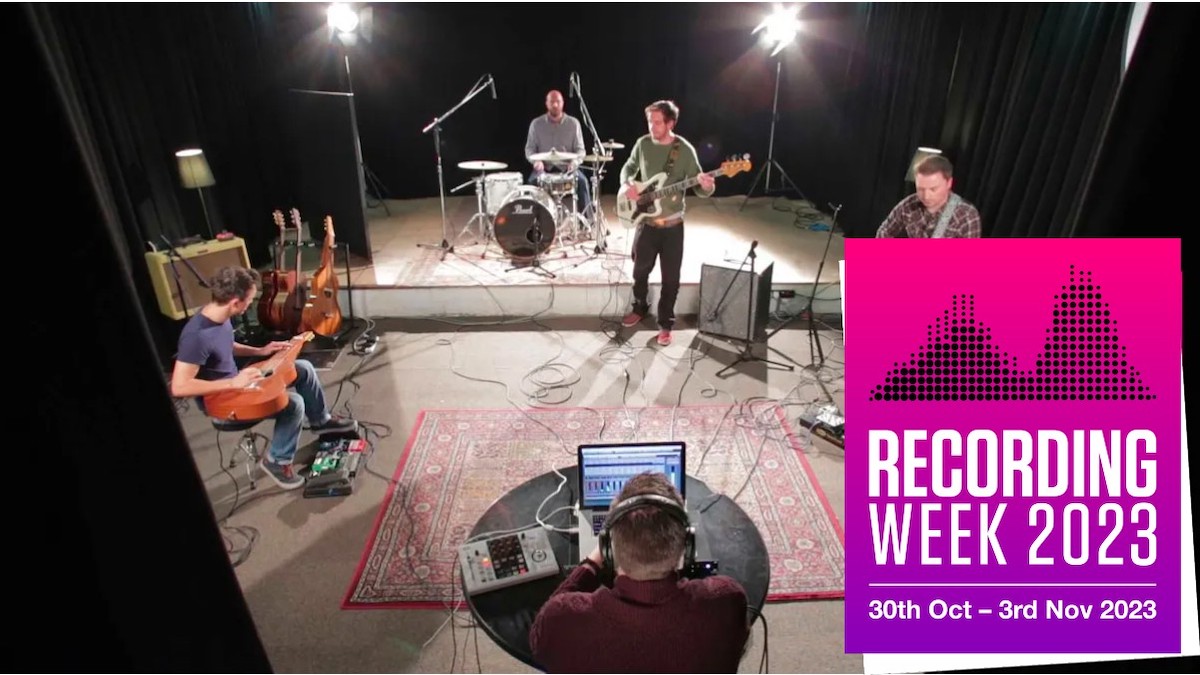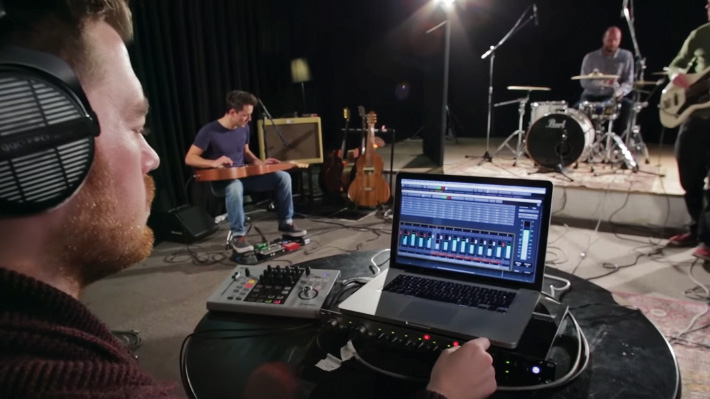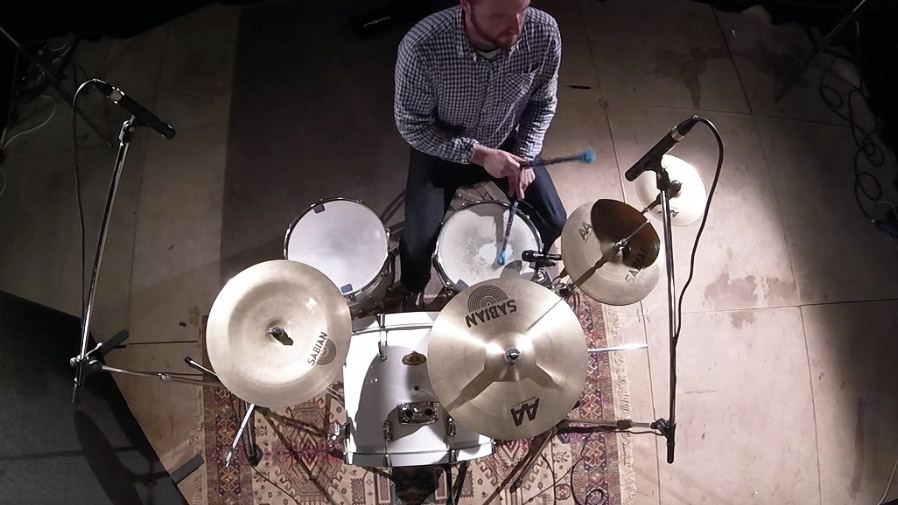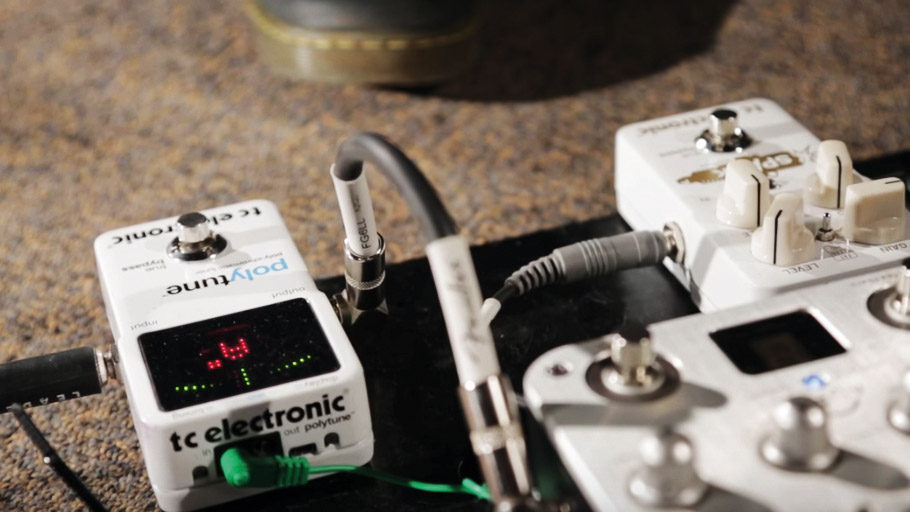10 things you need to know before you record your band
RECORDING WEEK 2023: Essential tips for tracking guitar, bass, drums and vocals live

RECORDING WEEK 2023: There are many ways to record your music, and you don't have to be in a traditional studio environment to get good results.
Capturing musicians playing together can reap great rewards in terms of dynamics and practicality, and showcase your band's chemistry together. Here's our 10-step guide to getting started with it…
1. Get the right gear first
As well as your instruments and amps, you'll need a laptop capable of running DAW software such as Cubase, or if you're old-school, a multi-track Portastudio. You'll also need an interface that can take multiple XLR inputs; eight would be ideal to cover amps, drums and room mics, too.
It's worth labelling XLR cables with each source (eg, Guitar Amp 1) so the signal paths don't get confusing
With that in mind, you'll also need plenty of XLR cables, and it's worth labelling them with each source (eg, Guitar Amp 1) so the signal paths don't get confusing.
Dynamic mics for amps are a must, as is a set of condenser and dynamic mics for the drums. If possible, an extra condenser or two to use as ambient mics is useful for capturing more of the overall sound of the band in the room.
You might decide to DI some sources, too; bass and acoustic amps are prime candidates, as they often feature XLR outputs. Also, bring spare strings, patch leads and guitar cables, because you never know!
2. Prepare
Before setting up to track your band, make sure you choose a song, or songs, to record that you can play consistently well live. You're going to be capturing the instruments live and while you may leave solos and vocals for a separate session, you need to nail your live parts and make sure the band dynamic and tone is as good as can be.
Get the MusicRadar Newsletter
Want all the hottest music and gear news, reviews, deals, features and more, direct to your inbox? Sign up here.
Having a friend who can engineer is useful, as it allows you to focus on your performance and speeds up the process of checking levels, and starting/stopping recording. Next, you need to choose your location. It could be your usual practice room or even a village hall, but you'll need enough space to position your band and not have excessive unwanted reverb…

Having a mate to be your engineer can simplify and speed up the process
3. Positioning the band
Because you'll be using mics to record the instruments, 'spill' or 'bleed' is inevitable between them. This is when the instrument on one mic is picking up the sound of another. It tends to happen less with the close mics you'll have on amps, but the drums are a loud instrument and spill from them is likely.
Because of this it's advisable to record your vocals in a separate session rather than have a sensitive condenser mic picking up the other instruments as well. You can minimise bleed between the other instruments by positioning musicians in a semi-circle or horseshoe shape so they're spaced out from each other but still close enough to communicate but amps aren't facing each other where they could cause feedback.
4. Drum mic'ing basics
Using a four-mic setup for the drums to capture clean sound, start with the overhead mics first. These capture the sound of the kit being played in the room and help produce a clearer cymbal sound.
Start by positioning them six feet above ground level and aimed down at the kit. It's vital that they are equal distances from the kit to avoid mic phasing (which happens when the sound is hitting each mic at different times).
For the kick drum, the closer you position the mic to the batter head (the side that is hit) the more attack you'll get from the sound. You may also choose to place a pillow inside the kick drum as a muffler to reduce unwanted overtones and help give a punchier, less boomy sound.
For the snare, position the dynamic mic a couple of inches above and an inch from the edge of it. The further you move it away, the more room ambience you'll get. And to reduce the amount of hi-hat cymbal sound hitting the snare mic, make sure it's facing directly away from the hi-hat.

Make sure your overhead drum mics are equidistant to avoid mic phasing
5. Recording guitars
It's important to monitor the effects on tone when you change the mic positioning
Dynamic mics are rugged enough to cope with the high frequency sound pressure levels coming from amplifier speakers. A single-mic setup with the mic directed at the speaker cone and almost touching the grille cloth can get you a good sound, especially if you tweak the positioning (see our guide to amp mic'ing for more), and it's important to monitor the effects on tone when you change the positioning; dead centre will be punchier, positioning to the edge adds a darker tonality.
When you've found your sweet spot, mark it with a cross of tape on your grille. If you have enough XLR inputs on your interface, you may want to add a condenser several inches away for more of an ambient element but make sure you engage the -10 decibel pad setting if it has one to help prevent clipping.
6. Recording acoustics
Though the ideal way to record your acoustic is with a condenser mic (check out our guide to recording acoustic guitars for more) the potential for mic bleed would compromise the recording too much. But fear not, if you're an acoustic player you can still track live with the band by mic'ing an acoustic combo amp or using its DI.
Your choice of pickup and preamp comes into play here. If you want to give magnetic soundhole or piezo pickups more of the 'acoustic' sound of a mic'd guitar, carefully dialling in your tone with an onboard EQ or preamp pedal can reap rewards.
An acoustic in the mix with a band needs mids to stand out, though, and less of the bass you might dial in when playing solo. Inevitably, there's compromise involved.
7. Troubleshooting
When the live session is underway make sure all guitarists and bassist have a tuner pedal and constantly retune between takes. Why risk sabotaging your song before you've even played a note?
And once you start, if someone makes a significant mistake, be prepared to stop. You've got to give your best chance at a performance you can live with. This is where the extra pair of ears of the laptop engineer are especially useful; they might hear a problem with the performance or signals that you don't.

Remember to re-tune between takes - even being a little out can ruin a take
8. Overdub session
You'll get the instrumental core of your song tracked in the live stage, but to take the pressure off, you may want to save solos for an overdub stage, using amp and effects modelling plugins to nail a take and tone that you're comfortable with.
But you may also choose to overdub parts to really add impact to your song's parts, such as adding ringing overdriven chords in the chorus. Think about how you can enhance it without losing that live energy you've captured.
9. Vocals
When recording the live instrumental, remember to keep vocals in mind with your playing dynamics so when you add them, the musicians are already reacting to the parts where vocals will be, such as taking things down a notch with their playing when the first verse comes in.
For the singer, it's important that they try to keep that live dynamic in mind for their own recording takes
For the singer, it's important that they try to keep that live dynamic in mind for their own recording takes, again using the interface and laptop setup. Get comfortable with the band recording and try some run-throughs before even touching that record button; this will serve as a warm-up for vocal cords that should make tracking easier in the long run.
It's very important that the vocalist is comfortable in the recording space so make sure they're singing up to the condenser mic to open their vocal chords and ensure they have a monitor mix of both their vocal level and the song that they're happy to sing with. Add the kind of effects that you would use post-recording for this monitor headphone mix; reverb can really help a singer's performance as opposed to a dry uninspiring signal, in the same way as it does for a guitarist.
10. Good foundations
Listen back and critically evaluate all the takes you have as a band before moving forward to the mixing stage. If you get good takes at the live and overdub stages that reflect the dynamics of your song well, it makes mixing your song a much more straightforward process as you'll be reflecting what's already there.
That's one of the great things about tracking the bulk of a recording live; it helps capture the energy of musicians playing a song in a more organic way that can be harder to replicate by tracking all the instruments individually.
Total Guitar is Europe's best-selling guitar magazine.
Every month we feature interviews with the biggest names and hottest new acts in guitar land, plus Guest Lessons from the stars.
Finally, our Rocked & Rated section is the place to go for reviews, round-ups and help setting up your guitars and gear.
Subscribe: http://bit.ly/totalguitar










